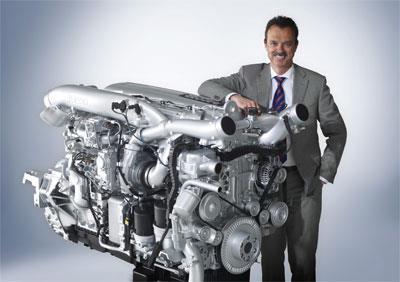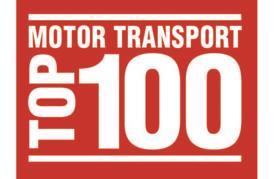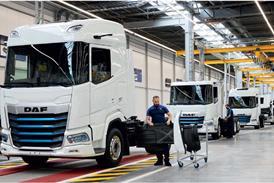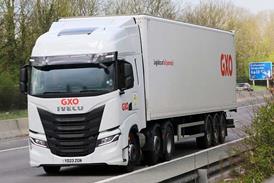
Readers of a certain age may recall an astonishing episode in the US truck industry in 1998 when seven big engine manufacturers, including the likes of Caterpillar, Cummins, Detroit Diesel and Volvo were accused by the US government’s Environmental Protection Agency of "cycle-busting." Put simply, the EPA alleged that engines’ electronic management systems had so-called "defeat devices" that meant the engines automatically adopted a different emissions strategy during the statutory type-approval emissions test cycle. The engines could meet the emission limits during the test cycle but would re-tune themselves for real-world service, when their NOx emissions would be up to three times the limit.
The engine manufacturers denied this but agreed an out of court settlement with the EPA, between them paying around US$ one billion.
European truck manufacturers too may have been doing something similar, according to a 2003 report by Graz University of Technology in Austria. The University carried out emissions testing of Euro-2 trucks and found that their real-world NOx emissions were on average 10% higher than Euro-1 engines’, even though they complied with the Euro-2 NOx limit - 12.5% below Euro-1’s - during the test cycle. Graz engineers concluded that the engines were mapped for low NOx at the 13-mode test points but "off-cycle the levels are rather higher than for Euro-1 engines."
Watertight legislation
Legislators on both side of the Atlantic have learnt a lot since then, writing regulations and constructing test cycles that are less easily circumvented in spirit. This drive to create watertight legislation reaches new heights with Euro-6 emissions limits, due to take effect on 31 December 2013. We all know Euro-6 limits for NOx and particulates and so on are far tougher than Euro-5’s, but so too are the three new "World Harmonised" test cycles that are used for Euro-6. They are backed up by a raft of new regulations centred on the performance and durability of the emissions reduction kit once the truck is in service. The objective is to make sure that every working Euro-6 truck actually delivers the emission benefits that are expected.
"Euro-5 limits are about performance in engine test-cells," explains Cummins Engines’ European director for product environmental management Peter Williams. "Euro-6 shifts the focus to real-world emissions, maintaining performance later in life." So Euro-6 introduces an ‘in-service conformity factor’ of 1.5. So, for example, an in-service engine must maintain NOx emissions of no more than 0.69g/kWh, equal to 1.5 times the 0.46g/kWh limit achieved in a test cell during the new World Harmonised Transient Cycle used for type approval. This in-service conformity, plus the performance of the on-board diagnostics (OBD) and all the kit used to monitor the operation of the exhaust after-treatment system, must be maintained for 700,000km or seven years, (whichever is the shorter) for trucks over 16 tonnes GVW. The durability requirement for lighter trucks is 300,000km/six years.
In-service conformity
Says Ron Borsboom, director of product development at Daf Trucks (pictured): "It is quite a challenge to make sure trucks meet in-service conformity standards when they are out of our control." He amplifies the point by explaining that Daf’s Euro-6 OBD will monitor the function of 14 actuators, 44 sensors and five emission control systems.
But how does this shift in emphasis affect truck operators, apart from them paying a hefty premium for all that extra emissions kit on Euro-6 trucks? The engine torque de-rate that already applies to ensure a Euro-5 engine’s AdBlue system is functioning correctly and using the right fluid is to be stiffened further at Euro-6. The first stage will be a 25% reduction in torque; the next stage – for failure to rectify - is a restriction of top speed to just 20km/h. And the OBD monitoring the truck’s emissions-critical equipment will light a Malfunction Indicator Lamp (MIL) on the dash and store the fault codes if anything goes wrong. How EU member countries police these OBD fault codes is up to individual national authorities but if detected by Vosa in the UK during roadside checks or annual tests these faults may lead to fines, OCRS points, prohibitions or test failure.
And Vosa too will be responsible for making the ‘in-service conformity’ checks, using portable gas analysers to check that what comes out of truck exhaust pipes complies with the conformity factor mentioned earlier.
European legislators are determined to make sure their efforts are never again thwarted. Widening their focus to include trucks in use means that the task of emissions compliance falls on operators, not just manufacturers. Operators will be taking on a seven-year/700,000km responsibility for the truck’s emissions kit, after-treatment equipment and OBD system. Everything must work reliably and what comes out of the tailpipe must remain within tight limits. What’s more, Vosa and the vehicles’ own OBD will soon detect any problems, potentially putting trucks off the road. It seems prudent to make sure repair and maintenance contracts for Euro-6 trucks address these responsibilities.
















